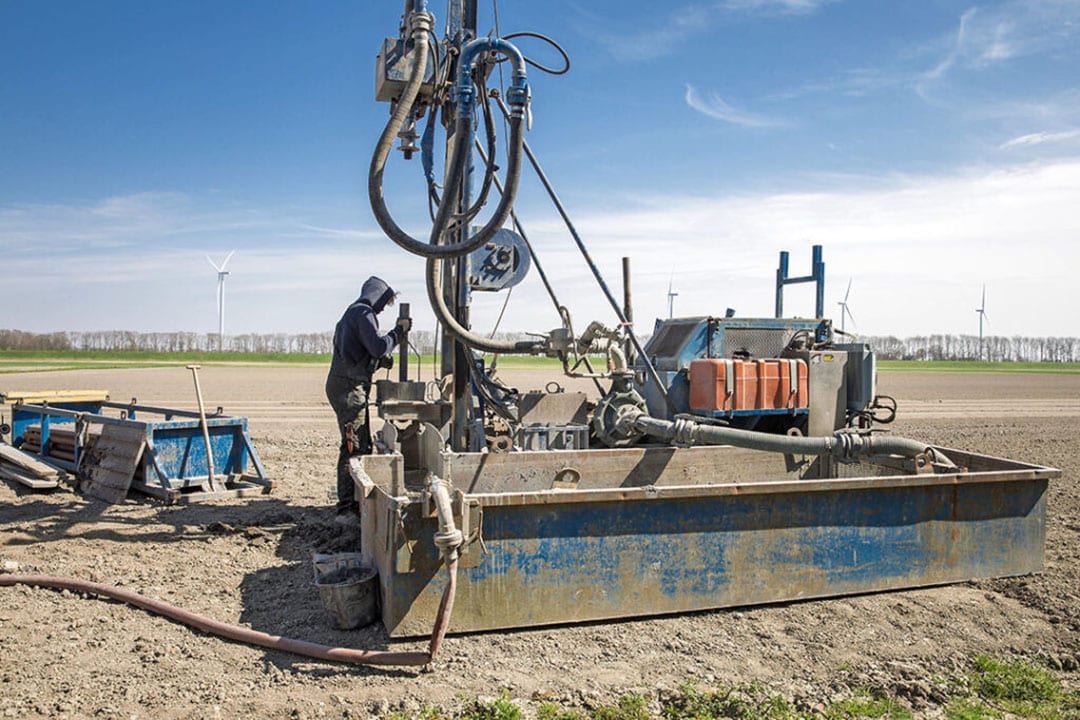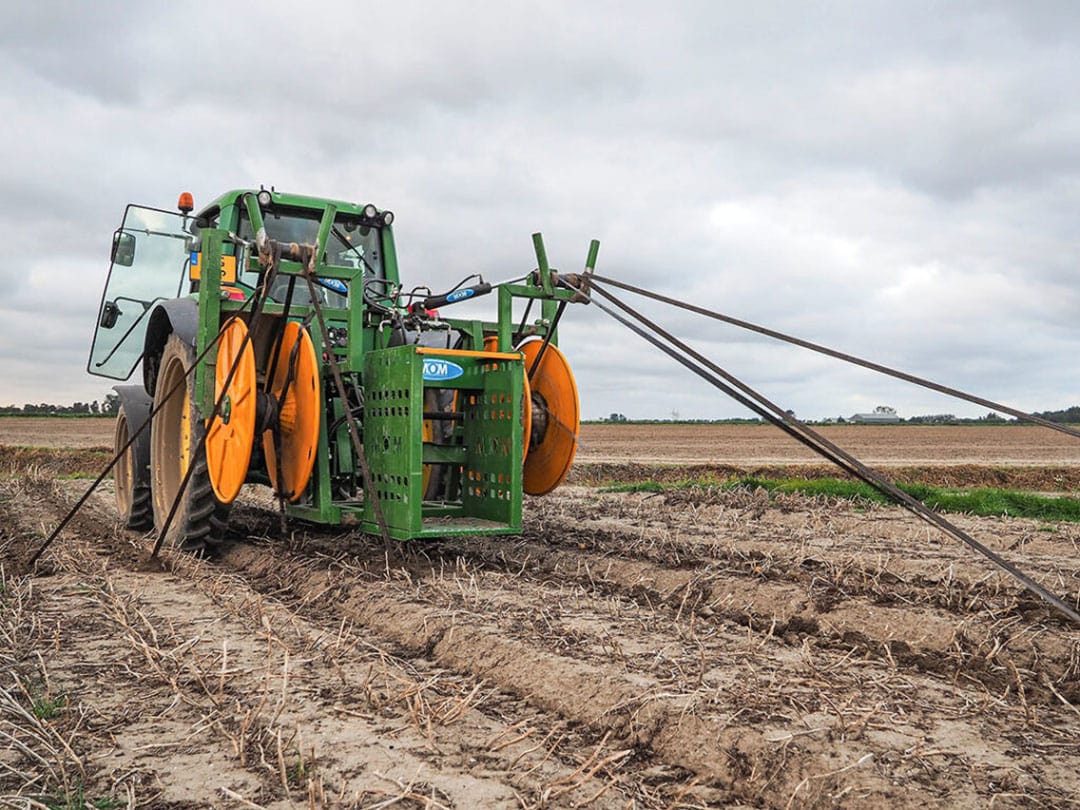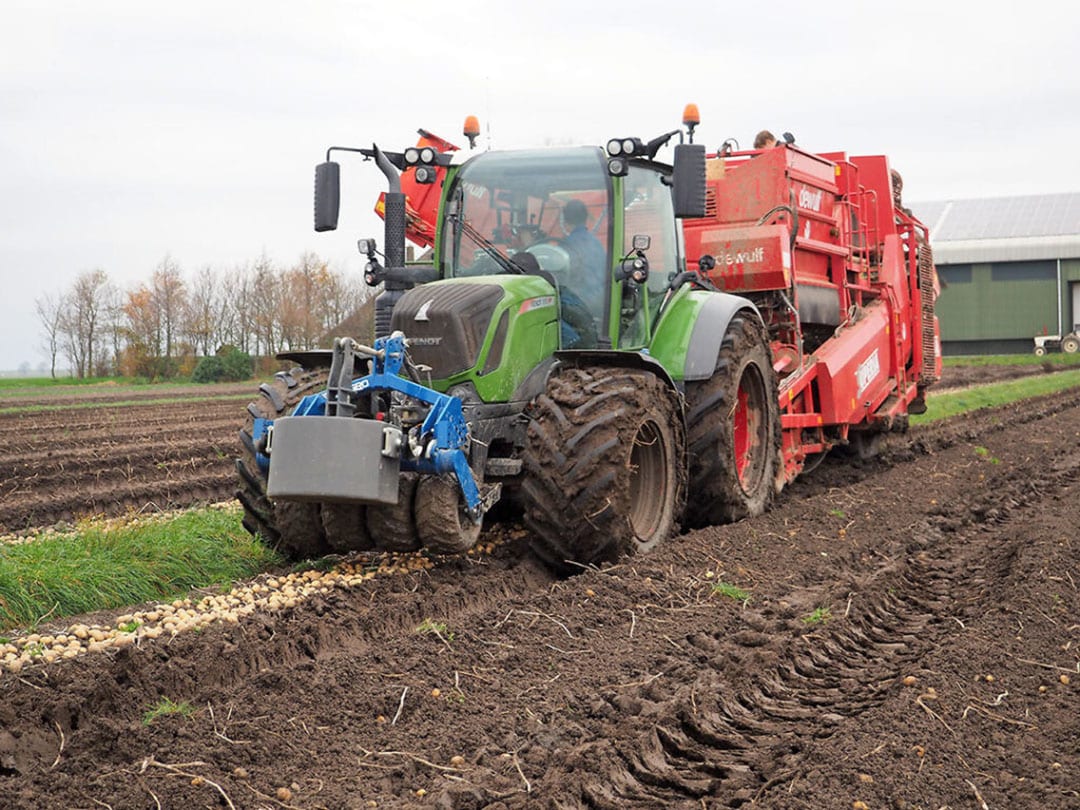Experimenting with drip irrigation in seed potatoes on wide beds

For Dutch seed potato grower Klaas Schenk, the switch to wide-bed cultivation and the use of drip irrigation was mainly a learning experience.
As arable farmer Klaas Schenk specialises in growing certified high-quality seed potatoes. Last year, he decided to get the most out of the crop using drip irrigation, i.e. 15 tubers per plant, not too big and not too small. Combining drip irrigation with cultivation on wide beds would help make this change of direction profitable.
He divided 12 hectares into sections of 1 to 2 hectares, with a soil composition that was as homogeneous as possible, in order to water them separately. Growing on wide beds worked out well, but watering was not necessary this season. Nature did its job.
Drip irrigation more difficult than expected
The farmer admits the installation of the drip irrigation system was more difficult than he expected. Delivery problems and the supplier’s lack of knowledge of arable farming caused many delays. What he did manage was to install drip hoses (22 millimetres in diameter, a delivery point every 30 centimetres) during planting (3 centimetres below ground level), build the silo (900 cubic metres of water buffer) and drill for groundwater (at a depth of 21 metres).
In July, later than planned, the main pipeline (diameter 125 millimetres, total length 500 metres) was laid in the ground and drip hoses could be connected. An infiltration pipe for underground water storage has not yet been laid. However, it proved unnecessary to supply the crop with water. Schenk: “There was enough moisture all year round. We used three Agrometius stations that register soil suction at 30 centimetres and we always stayed within the margins. If we went outside the margins it was because it was too wet.” The grower rolled up the unused drip hoses again at the end of September.
Text continues underneath image

Increased cost of PVC
The collection of rainwater was not realised due to the increased cost of PVC. “This is on the agenda for next spring. There must then also be a plan for infiltration into an underground storage facility”, says the grower, who at the same time wants to make the system suitable for collecting drainage water.
What Schenk envisages is a combined, adjustable drainage system that gives him more control over the moisture balance of the soil and makes him less dependent on the local water management authorities. The plan has been moulded into a project and is eligible for a government grant. “You can then set two heights, as it were, whereby you either allow water to drain off or keep it in the root zone. In the event of clustered showers, you can divert excess water to your own storage, and in dry periods you can bring in water.” Such agricultural water management projects can count on support from the government.
Netafim drip irrigation hoses
Schenk opted for relatively expensive Netafim hoses, at a cost of € 1,200 per hectare, assuming he would be able to re-use them. Unfortunately, this is not possible. “When the hoses were pulled out and immediately rolled up, they snapped here and there. Probably damage also occurred by laying them during planting”, says the grower, who has been thinking about solutions. Next season he wants to try two options next to each other. “In one case we will use a cheaper hose and go for single-use with the same machines. In the other case, we will insert more expensive. re-usable hoses after planting. When removing those hoses, we will then first neatly lay them on top of the soil and then roll them up.”
It’s not quite how he envisaged it, but Schenk knows that there are still many developments in the field of watering. “If the collection, storage and main pipelines are in place, the foundation has basically been laid. We are also open to new systems, modified reels, spray booms and robots; there is still a lot of potential.”
Text continues underneath image

Harvesting machine not delivered
The seed potatoes were first to be lifted on top of the bed and then loaded. For this purpose, Schenk had purchased a new harvesting machine, but this was not delivered, not on 1 September, not on 1 October and, eventually, not at all. “The problem is that the machine has to come from abroad. There, they grow 2 x 90 centimetres and here you are stuck with 2 x 75 centimetres. However, I deliberately opted for 1.80 metres, because I can then place two drip hoses per bed between three rows of potatoes. This means that I use less land for tracks and I achieve more ground coverage.”
Then, in mid-October, a machine from Germany arrived to dig up the potatoes. For harvesting, the bunker harvester of a colleague was borrowed. The last 3 hectares were loaded on 24 November in poor weather conditions. Schenk is not discouraged; his new machine will be there next year.
No complaints about yield and quality
Schenk has no complaints about yield and quality. “The tubers are good, no scab or rhizoctonia, I have 5% oversized and 81% good seed potatoes in the 28-55 class. All in all, I harvested more tons of seed potatoes per hectare, but also planted about 20% more.”
Schenk thinks there is room for improvement by watering in doses according to need. There are also benefits to be gained from planting. “The new planter we bought places them more accurately at the desired distance and depth, which is already an advantage. I think inserting the drip hoses at the same time was a mistake, because the soil then has to be pressed down more. If I insert them later, I keep the top soil more loose. That’s better for growth, especially in a year with low temperatures and too much rain after planting.”
This year the potatoes are planted at a depth of 12 and 15 centimetres again. Finally, the average kilogram yield can be increased if harvesting takes place under better conditions. According to Schenk, a relatively large number of potatoes were left on the fields in November.
Text continues underneath image

Join 17,000+ subscribers
Subscribe to our newsletter to stay updated about all the need-to-know content in the agricultural sector, two times a week.



